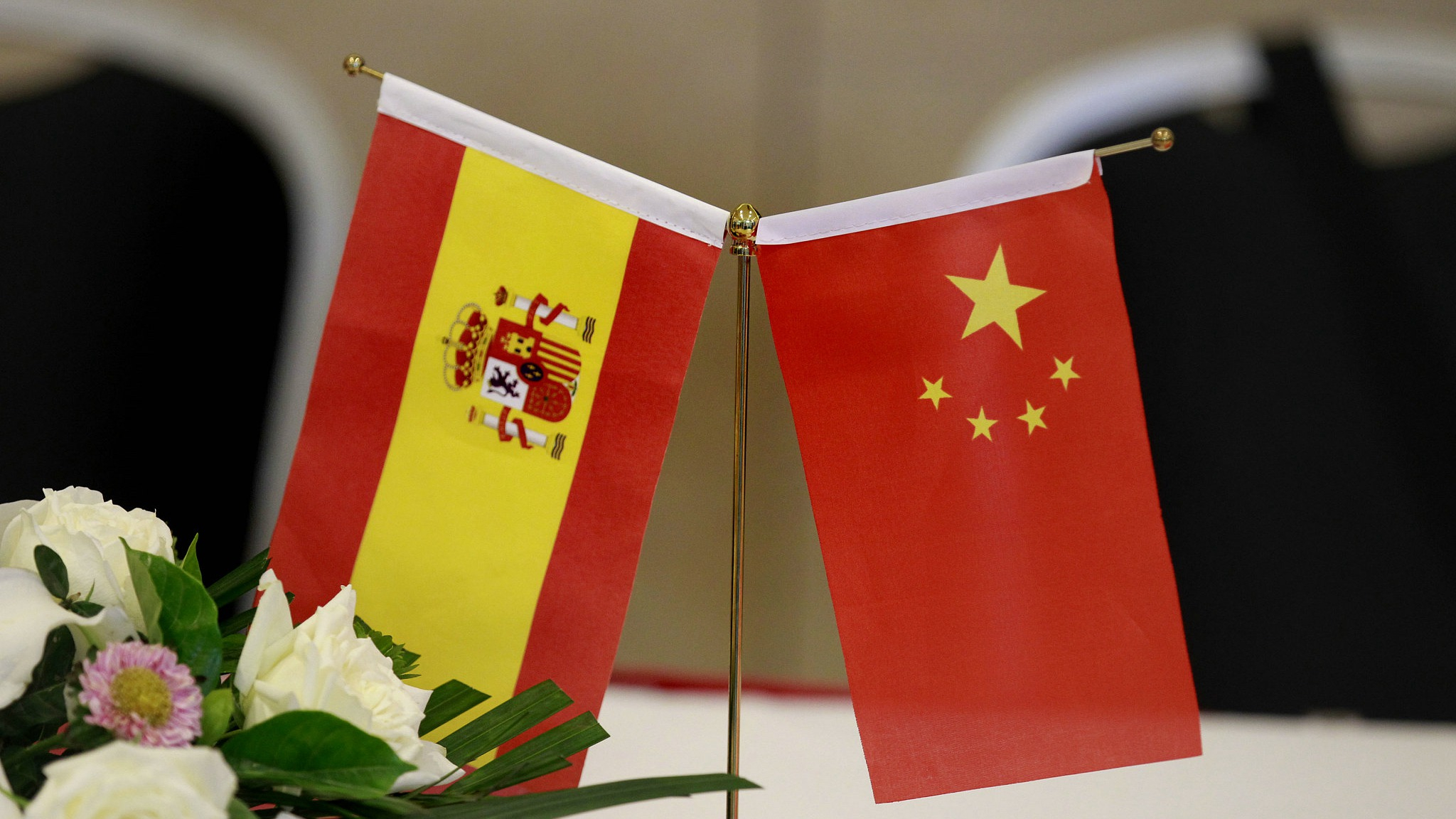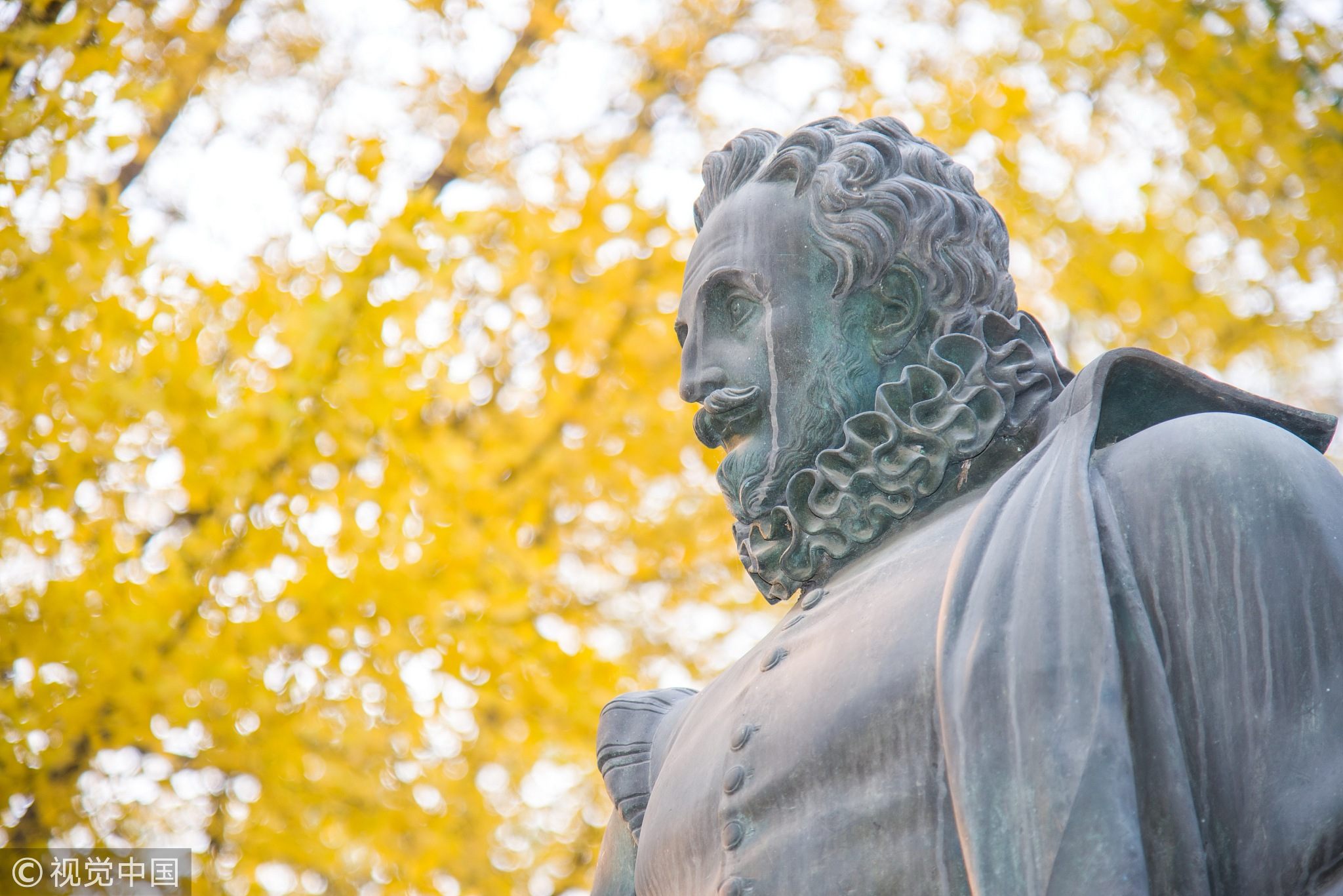
Opinions
22:50, 28-Nov-2018
Opinion: When Confucius and Cervantes shake hands
Updated
22:49, 01-Dec-2018
By Wang Peng

Editor's note: Wang Peng is an associate research fellow at Chongyang Institute for Financial Studies, Renmin University of China, and a researcher at the Charhar Institute. The article reflects the author's opinion, and not necessarily the views of CGTN.
Chinese President Xi Jinping arrived in Spain on Tuesday for a three-day state visit, which aims to hail ties between these two countries and maintain their “best period in history” as President Xi made the remarks during a meeting with Spanish King Felipe VI.
In Chinese diplomatic discourse, Spain has earned the title as “Lao Peng You” (an old friend). It is not only because Spain is one of the earliest European countries to establish diplomatic ties with China, but also for their long history of mutual learning and communication between different civilizations.
When visitors walk around the campus of Peking University, one of the most esteemed higher education institutions in China, they will see a statue of Miguel de Cervantes, the most well-known Spanish writer, who is widely regarded as the greatest writer in the Spanish language and one of the world's pre-eminent novelists.

The statue of Miguel de Cervantes in Peking University
The statue of Miguel de Cervantes in Peking University
His novel “Don Quixote” has been translated into more than 140 languages and dialects, including Chinese; and as a result, Cervantes is now playing the role as Spain's primary cultural ambassador in Beijing to connect the minds of people from the two countries.
Both China and Spain set good examples for the practice of “learning from each other” between different civilizations.
In history, prosperous trade and interconnectivity on land and at sea not only brought exquisite ceramics, shining silk dress, and oriental fine arts but also introduced great thinkers and philosophers of the west and the east to each other.
Spanish people began to learn the spirit of “kind-heartedness and justice” from Confucius, while Chinese people also acquired the knowledge of the “gospel” from Spanish missions.
In modern times, the diplomatic relations between China and Spain were established on March 9, 1973. In the past 45 years, bilateral ties developed steadily. They established a comprehensive strategic partnership in November 2005.

Members of the Chinese community in Madrid line a street as they wait for the motorcade of Chinese President Xi Jinping who is on a state visit in Madrid, Spain, November 28, 2018. /VCG Photo
Members of the Chinese community in Madrid line a street as they wait for the motorcade of Chinese President Xi Jinping who is on a state visit in Madrid, Spain, November 28, 2018. /VCG Photo
This milestone has continued to deepen their cooperation and coordination. Now they are enjoying close exchanges at the top level and strong political mutual trust.
On the personal level, both President Xi and Spanish King Felipe VI can call each other “my old friend” since they met in Astana, Kazakhstan. At that meeting, President Xi invited Spain to make full use of the Yiwu-Madrid Railway, connecting Spanish capital Madrid with Yiwu, a flourishing and vibrant city in southeast China.
As a warm response, Spanish King Felipe VI also emphasized the great importance of strengthening political trust, deepening high-level exchanges and enhancing practical cooperation in all areas with China.
What's more, at this meeting, the King also stressed the great potential of Spain's role in connecting China and Europe. Spain is looking forward to continuing strengthening communication and coordination in multilateral affairs with China and actively promoting the deepening of EU-China ties, especially in an era of uncertainty in the world economy.

A visitor takes a photo of an exhibition booth at the China International Import Expo (CIIE) full of Spanish football clubs' uniforms. /VCG Photo
A visitor takes a photo of an exhibition booth at the China International Import Expo (CIIE) full of Spanish football clubs' uniforms. /VCG Photo
In conclusion, there is no doubt that this three-day visit will become a milestone in their diplomatic history, as well as the new legend of the “Belt and Road” in the 21st century.
The long distance between two opposite ends at the Eurasian continent cannot stop the mutually beneficial trade or cultural communication between Chinese and Spanish people.
When Confucius and Cervantes shake hands, this historical event breaks the myth of the “clash of civilizations,” replacing it with the “dialogue between civilizations,” which as President Xi pointed out, will construct the core spirit and major framework of building a community with a shared future for mankind.
(If you want to contribute and have specific expertise, please contact us opinions@cgtn.com.)

SITEMAP
Copyright © 2018 CGTN. Beijing ICP prepared NO.16065310-3
Copyright © 2018 CGTN. Beijing ICP prepared NO.16065310-3